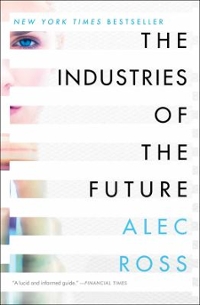Question
ECO 215 Macroeconomics Case Study U.S. Output Gaps and Wage Flexibility Let's look at estimates of actual and potential GDP. PowerPoint Slide 22 measures actual
ECO 215 Macroeconomics Case Study U.S. Output Gaps and Wage Flexibility Let's look at estimates of actual and potential GDP. PowerPoint Slide 22 measures actual GDP minus potential GDP as a percentage of potential GDP for the United States. When actual output exceeds potential output, the output gap is positive and the economy has an expansionary gap. For example, actual output in 2000 was 1.9 percent above potential output, amounting to an expansionary gap of about $180 billion (in 2000 dollars). When actual output falls short of potential output, the output gap is negative and the economy suffers a contractionary gap. For example, actual output in 2003 was 1.5 percent below potential output, amounting to a contractionary gap of about $170 billion (in 2000 dollars). Note that the economy need not be in recession for actual output to fall short of potential output. For example, from 1992 to 1998, and from 2001 to 2004, the economy expanded, yet actual output was below potential output. As long as unemployment exceeds its natural rate, the economy suffers a contractionary gap. Employers and employees clearly would have been better off if these contractionary gaps had been reduced or eliminated. After all, more workers would have jobs to produce more goods and services, thereby increasing the nation's standard of living. If workers and employers fail to reach an agreement that seems possible and that all would prefer, then they have failed to coordinate in some way. Contractionary gaps can thus be viewed as resulting from a coordination failure. If employers and workers can increase output and employment by agreeing to lower nominal wages, why doesn't such an agreement occur? As we have already seen, some workers are operating under long-term contracts, so wages aren't very flexible, particularly in the downward direction. But if long-term contracts are a problem, why not negotiate shorter ones? First, negotiating contracts is costly and time-consuming (for example, airline worker contracts take an average of 1.3 years to negotiate). Longer contracts reduce the frequency, and thus reduce the average annual cost, of negotiations. Second, long-term contracts reduce the frequency of strikes, lockouts, and other settlement disputes. Thus, both workers and employers gain from longer contracts, even though such contracts make wages more sticky and contractionary gaps more likely to linger. When demand is slack, why do employers lay off workers rather than cut nominal wages? Yale economist Truman Bewley interviewed over 300 managers, union officials, and employment recruiters and concluded that resistance to paying cuts comes, not from workers or unions, but from employers. Employers think pay cuts damage worker morale more than layoffs do. By lowering morale, pay cuts increase labor turnover and reduce productivity. In contrast, the damage from layoffs is brief and limited because laid-off workers are soon gone and cannot disrupt the workplace. What's more, even during the sharpest of recessions, more than nine in ten workers still keep their jobs (or soon find other jobs), so most workers have little incentive to support a wage cut to maintain employment. Another reason workers may be reluctant to accept lower nominal wages is unemployment benefits. When a worker is laid off, the incentive to accept a lower wage is reduced by the prospect of unemployment benefits. The greater these benefits and the longer their duration, the less the pressure to accept a lower wage. For example, in the latter part of the 1920s, unemployment benefits nearly tripled in Great Britain and eligibility requirements were loosened. Despite record-high unemployment during the Great Depression, money wages in Great Britain remained unchanged during the period. For some people, unemployment benefits had become a viable alternative to accepting a lower wage. SOURCES: Truman Bewley, Why Wages Don't Fall During a Recession (Cambridge, Mass.: Harvard University Press, 2000); Andrew von Nordenflycht, "Labor Contract Negotiations in the Airline Industry," Monthly Labor Review (July 2003): 18-28; Laurence Ball and David Romer, "Sticky Prices and Coordination Failures," American Economic Review 81 (June 1991): 539-552; Daniel Benjamin and Levis Kochin, "Searching for an Explanation of Unemployment in Interwar Britain," Journal of Political Economy 87 (June 1979): 441-470; Greg Ip, "Fed's Moscow, Potential Growth Has Slowed," Wall Street Journal, 19 July 2007; and Survey of Current Business 87 (July 2007).
. (CaseStudy: U.S. Output Gaps and Wage Flexibility) Unemployment is costly to employers, employees, and the economy as a whole. What are some explanations for the coordination failures that prevent workers and employers from reaching agreements?
Step by Step Solution
There are 3 Steps involved in it
Step: 1

Get Instant Access to Expert-Tailored Solutions
See step-by-step solutions with expert insights and AI powered tools for academic success
Step: 2

Step: 3

Ace Your Homework with AI
Get the answers you need in no time with our AI-driven, step-by-step assistance
Get Started


